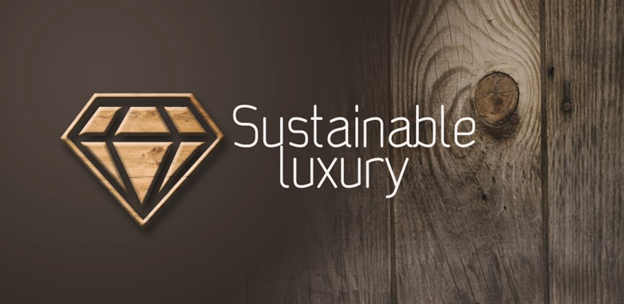Luxury & Sustainability: The new gold rush ft. Freitag
Since its creation, Freitag has produced elegant, resistant and high quality products.
Moreover, the brand is perceived as an ecological brand, aware of the problem of the fashion’s overconsumption and all its environmental and societal consequences (House of Switzerland, 2020).
Indeed, the brand is standing for innovation, creativity, and environmental awareness. It is known for its investments in recycling used materials to create its famous product. Also, the company only works on resources available within 2’500 kilometers of their factory (EWP Team, 2019).
From rainwater to recovering half of its heat in recovery plants and using hydro and solar electricity, Freitag has adopted a circular economy since its creation in 1993 (Nyfeler, 2019)
For the customers, Freitag is distinguished from any other brand. Indeed, there is no similar brand investing so much in sustainable activities and consumers understand in addition to loving it since the beginning.
A menacing climate of environmental uncertainty has been floating around our society for many years now. The younger generations, such as generation Y or millennials, grew up surrounded by raising environmental awareness and most people have a critical opinion of the current situation.
Luxury encapsulates authenticity, personal growth and self-expression along with brands commonly carrying progressive societal values. Sustainability is positively perceived nowadays and people may experience and bear luxury products to express their support towards the cause, assuming an association between luxury products and sustainable values.
Sustainable values are a leverageable foundation for brand communities; luxury brands set an example and their consumers would then support it, thus allowing them all to express a unifying common trait. Sustainability-friendly communities may also encourage interactivity between users, such as sharing small gestures and calls-to-action among other actions to provide content for their members.
As such, luxury firms should openly express their support towards ecology, for example through guest stars, brand ambassadors and social media presence while applying sustainable production to remain relevant in the current society. Indeed, the consumption of luxury isn’t only a simple act of consumption, it is also an expression of status and sophistication, and one wouldn’t want such aspects of their identity to be associated with values that aren’t congruent to theirs.
This is especially important as, nowadays, luxury brands are entities that the consumers chose for a myriad of reasons, values included. Consumers are holding the power to change the market (Menendez, 2020) and brands have to adapt. How quick and effectively they do so will position them as trend-setters, reaping the benefits of early adoption. This does not stop there however, as, upon applying and proving consumer’s interest in such a topic (sustainability or other), the market will shift and adopt – as well as strengthen – the target consumer culture.
The luxury industry makes a huge contribution to climate change. Every year luxury brands publish a glossy brochure to fool the public into believing that they already respect human rights, while they continue to buy diamonds from African warlords. At this point it is no longer a matter of blaming the consumer or the legislator and "thinking" about how brand leaders can "educate" these economic actors. Instead, it is time for luxury brand leaders to take responsibility for the environmental and social impact of their actions. Stop greenwashing, stop lobbying in Parliament to prevent Switzerland from following the most ethical path, stop being greedy and destroying lives to afford a new yacht. It's time to change your worldview and start leading by example. Because if no one takes responsibility, systematically blames others and takes the initiative to change things, we are heading for disaster. And who knows, maybe doing so by being the first to sincerely care more about the future of humanity than about our own wallets, could well lead to creating wealth and value for both, luxury brands and society as a whole. It's called egoistic altruism, and it works.
When Chanel announced that it would no longer use reptile skins, some animal experts argued that it would not be better to save the animals and would even have a negative impact on the conservation of wildlife and the livelihood of people who depend on them. Because some aboriginal people earn income from wild crocodile or lizard skins, it also inspires them to take the initiative to protect wetlands, forests and animals. And there is scientific proof that this practice is sustainable. Four members of the IUCN Species Survival Committee, Rosie Cooney, Tomas Waller, Grahame Webb and Daniel Natusch, co-authored the article. In their article they state "To know that their (wild species) sustainable use is what keeps them there and breeding."
Sustainable fashion is much more than just being eco-friendly, it's about passing on the industry's traditional craftsmanship, promoting gender equality and diversity in the workplace, driving innovation, and even explaining to consumers what sustainability is and changing the way people think.
REFERENCES
EWP Team (Jan, 2019), The Ultimate Guide to Ethical and Eco-Friendly Work and School Backpacks and Rucksacks, Eco Warrior Princess, available at: https://ecowarriorprincess.net/2019/01/ultimate-guide-stylish-ethical-eco-friendly-work-school-backpacks-rucksacks/
Morgane Nyfeler (Jul, 2019), The sustainable staying power of Swiss brand Freitag, Wallpaper, available at: https://www.wallpaper.com/fashion/freitag-sustainable-bags .
House of Switzerland (Sept, 2020), Freitag: recycling with style, House of Switzerland, available at: https://houseofswitzerland.org/swissstories/economics/freitag-recycling-style
Enrique Menendez (Dec, 2020), Brands No Longer Hold Power in Luxury. Who Does ?, Jing Daily, available at: https://jingdaily.com/popular-luxury-model-kering-lvmh-richemont/

Comments
Post a Comment